Slavery in Missouri
The roots of slavery in Missouri trace back to the French colonial era when the territory was part of the vast Louisiana Territory. Under both French and Spanish rule, enslaved Africans were brought into the region to labor in agricultural settlements, fur trading outposts, and as domestic servants. By the early 1800s, especially following the Louisiana Purchase of 1803 and the formal organization of the Missouri Territory in 1812, slavery had become deeply entrenched in the state's developing economy. The Missouri Compromise of 1820—which admitted Missouri as a slave state and Maine as a free state—symbolized not just a political maneuver to maintain balance in the Senate, but a national recognition of Missouri’s integral role in the perpetuation of slavery within the expanding United States.
The slave economy in Missouri revolved primarily around agriculture, though it exhibited important nuances compared to the plantation-heavy systems of the Deep South. Missouri’s terrain and climate varied significantly across the state, with plantation agriculture dominating the fertile regions along the Mississippi River, especially in the Bootheel and central regions, while small-scale farming utilizing slave labor was common in the more rugged areas. Cotton, tobacco, hemp, and grain were cultivated by enslaved workers under brutal conditions. As cities like St. Louis and Kansas City grew, urban slavery also became a notable feature of Missouri’s economy. Enslaved people worked in trades, factories, shipping yards, and as artisans, porters, and domestic servants. These labor roles made slavery in Missouri more visible and complex, entangling it with burgeoning industrial ventures and urban commercial interests.
St. Louis emerged as a major hub of the slavery industrial complex in the state. Beyond being a river port through which enslaved people were trafficked and commodities produced by their labor were shipped, it was also home to banks, insurance companies, and merchants that profited directly and indirectly from slavery. Financial institutions provided loans using enslaved persons as collateral. Auction houses regularly sold men, women, and children as human property. Railroads, including those partially funded by bonds and investors in Missouri, often used enslaved labor during their construction. The intricate web of Missouri’s economic development cannot be unraveled from the exploitation of enslaved African Americans.
Many white families in Missouri who did not own slaves still benefited from the system. Laws allowed white citizens to rent slaves for short- or long-term labor, a practice especially common in urban settings. Enslaved people were used in public works, building roads, bridges, and government buildings—funded by taxpayers who, regardless of slaveholding status, participated in and profited from the institution of slavery. Churches, newspapers, and civic institutions reinforced slavery through religious justifications, racist propaganda, and silence in the face of injustice. Moreover, the state's public and private educational institutions have legacies tied to slavery, many of which are only recently being scrutinized.
Several prominent Missouri colleges and universities owe their early financial solvency to the contributions of enslavers and the profits of slavery. The University of Missouri, founded in 1839, was established with funds generated through taxes and subscriptions from slaveholding citizens. Many of its early faculty and donors were themselves slaveholders, and enslaved persons worked on the campus in its earliest years. Washington University in St. Louis, though founded slightly later, also had connections to slave-owning donors and benefactors who profited from slave labor. Other institutions in the state were similarly complicit, either directly through slaveholding or indirectly through donations and endowments linked to the slave economy. These historical truths form an unbroken link between the past injustices of slavery and the current prosperity and social positioning of Missouri’s educational elite.
Missouri slave laws codified and protected this exploitation with brutal efficiency. From the territorial period onward, laws defined enslaved people as chattel property, giving their owners nearly total control over their lives. The state’s slave code forbade teaching slaves to read or write, imposed harsh penalties for escape attempts, and allowed cruel physical punishment without recourse. Enslaved persons could not legally marry, testify against whites in court, or own property. Laws governing “free” Blacks were equally oppressive, requiring them to register with local authorities, post bonds for good behavior, and remain under constant surveillance. These legal frameworks ensured that even outside of outright slavery, Black Missourians were subjected to control, harassment, and disenfranchisement.
The cruelty of Missouri’s slave system is vividly documented in the narratives of those who survived it. In the 1930s, the Federal Writers’ Project collected interviews from formerly enslaved individuals, including several from Missouri. Their testimonies reflect lives marred by violence, deprivation, and heartbreak. One formerly enslaved woman recalled being sold at the age of twelve and repeatedly beaten. Another described witnessing the sale of their mother and siblings, never to be seen again. These narratives not only underscore the individual tragedies caused by slavery but also illustrate the systematic nature of its violence and psychological trauma. They serve as living indictments of the state’s participation in a regime of terror that reduced people to property.
Even after the Civil War, the end of slavery did not mean liberation in any true sense. The Freedmen’s Bureau, established to assist formerly enslaved persons in the transition to freedom, operated in Missouri with limited success. Though the Bureau provided some education, legal assistance, and protection, it faced overwhelming resistance from local whites, insufficient funding, and institutional sabotage. In Missouri, the Bureau’s schools were frequently attacked or burned, and freedpeople were often forced into exploitative labor contracts that resembled slavery in all but name. Violence against Black Missourians remained widespread, with lynchings and race riots occurring throughout the Reconstruction era and beyond.
Despite these challenges, Missouri produced a number of notable Black abolitionists, civil rights leaders, and freedom fighters who resisted the machinery of slavery and white supremacy with courage and vision. Among them was John Berry Meachum, a formerly enslaved man who purchased his own freedom and that of several others. Meachum founded the First African Baptist Church in St. Louis and operated a covert school for Black children, defying Missouri’s anti-literacy laws. When local authorities shut down his school, he moved it to a steamboat in the Mississippi River, outside the jurisdiction of Missouri law, and continued teaching. His legacy stands as a testament to ingenuity and resistance in the face of oppressive power.
Another significant figure was George B. Vashon, a lawyer and educator who was among the first Black men admitted to practice law in the United States. Though he faced barriers to practicing in Missouri due to racist licensing boards, he remained active in civil rights advocacy. Additionally, figures such as Charlton Tandy, a Black Civil War veteran and activist, campaigned for equal rights and helped formerly enslaved people transition to freedom, advocating for legal reforms and establishing aid organizations.
The struggle for Black dignity and liberation in Missouri also intertwined with the genocidal policies inflicted upon Native American communities, especially through the Indian Removal Act of 1830 and the Trail of Tears. Missouri was not only a slave state—it was a transit corridor for the forced migration of Indigenous peoples. Thousands of Cherokee, Creek, Chickasaw, Choctaw, and Seminole people passed through Missouri as they were forcibly marched from their ancestral lands in the Southeast to what was then designated as Indian Territory. This government-mandated relocation led to the deaths of thousands due to exposure, starvation, and disease.
Enslaved Black people and displaced Native Americans shared overlapping histories of dispossession, forced labor, and racialized violence. On the Trail of Tears, many of the wealthier Native American families brought enslaved Black people with them, illustrating the complexity of racial hierarchies and the tragic intersections between slavery and settler colonialism. Missouri, as both a border state and a conduit for federal removal policy, played a central role in this episode of American atrocity. Settlers who occupied lands vacated by removed tribes often used enslaved labor to work the soil, profiting from a double act of dispossession—one Indigenous, the other African.
These historical entanglements show that Missouri was not an outlier in the history of slavery in the United States, but a deeply implicated actor in both the enslavement of African Americans and the removal of Native peoples. Its history reflects the broader American paradox: a nation built on liberty and democracy that relied on systemic racial oppression to expand its power and wealth.
Today, the legacy of slavery continues to shape life in Missouri. Racial wealth gaps, educational disparities, unequal policing, and patterns of residential segregation all stem from the institutional structures of slavery and the post-Emancipation systems designed to keep Black Missourians marginalized. Universities that once benefited from enslaved labor now house archives that document that same exploitation. Corporations with historical ties to the slave economy operate with little public accountability for their origins. Cities like St. Louis, which once thrived on the labor and trade of enslaved people, still bear the scars of racial inequality carved generations deep.
Efforts to reckon with this history have grown in recent years, with calls for reparations, historical memorialization, and curriculum reform. Missouri’s role in slavery, once sidelined in national narratives, is being re-examined through public history projects, academic scholarship, and grassroots activism. Yet these efforts often meet resistance, revealing how the past continues to exert power over the present.
Missouri’s history of slavery is not merely a chapter in the American story—it is a foundation. From the auction blocks of St. Louis to the cotton fields along the Mississippi, from the courtrooms that denied Black humanity to the classrooms that forbade Black learning, the state’s institutions were shaped by slavery’s logic and legacy. The lives of those who were enslaved, those who resisted, and those who continue to fight for justice today demand not just remembrance, but redress.
The immediate aftermath of the Civil War in Missouri exposed both the promise and the peril that newly freed Black people would face for generations. Emancipation reached the state in stages. Large numbers of enslaved Missourians secured de facto freedom by fleeing to Union lines early in the conflict, while others remained captive until the state’s Constitutional Convention declared slavery abolished on January 11, 1865. Yet freedom, once proclaimed, proved fragile.
Former enslavers refused to relinquish labor without compensation, and paramilitary groups—composed of ex‑Confederates, local militias, and unrepentant slave patrols—mounted campaigns of terror to reassert racial dominance. Violence surged across rural counties such as Monroe, Howard, and Saline, where Black families attempting to establish independent farms were whipped, shot at, or driven from their land at gunpoint. In the river cities, newly freed laborers who organized for wages found themselves forced back into quasi‑bondage through “apprenticeship” contracts and vagrancy laws that criminalized unemployment for Black Missourians alone.
The Freedmen’s Bureau arrived in Missouri in mid‑1865 with a skeleton staff and a mandate that far outstripped its resources. Agents sought to arbitrate labor contracts, reunite families, and establish rudimentary courts that could supersede biased local tribunals. In practice, Bureau officers were overwhelmed by thousands of complaints: freedwomen demanding unpaid wages from past years of enslavement, veterans seeking equitable treatment from county sheriffs, parents begging for legal custody of children still held by former owners.
The Bureau did open dozens of primary schools—many staffed by northern missionaries—but these became lightning rods for white hostility. In Jonesburg and Glasgow mobs burned Bureau‑supported classrooms to the ground. Agents chronicled death threats and lynchings with grim regularity, forwarding reports to Washington that rarely resulted in prosecutions. Despite the dangers, Black communities clung to the Bureau’s assistance, using its limited legal authority to found benevolent societies, secure marriage certificates, and purchase small plots of land whenever possible.
By 1867 congressional Radical Reconstruction extended federal oversight to former Confederate states, but Missouri was exempt because it had remained within the Union. Consequently, the state legislature retained autonomy to fashion its own “redemption.” White lawmakers repealed wartime loyalty oaths, restored voting rights to ex‑rebels, and drafted so‑called peace ordinances that denied compensation or pensions to Black Union soldiers while granting generous relief to white veterans. The reconstituted political order ushered in a new wave of discriminatory statutes: segregation on streetcars in St. Louis (1870), exclusion of Black jurors (1871), and the infamous “curfew ordinances” in Jefferson City, Cape Girardeau, and Springfield that confined African Americans indoors by nine o’clock each night.
Resistance grew in tandem with repression. Black newspapers flourished, notably the St. Louis Weekly Advocate founded in 1876 by William J. Mitchell, a preacher and educator who used his platform to denounce lynching and to publicize voter‑registration drives. Simultaneously, women such as Martha Scott, Henrietta Woods, and Julia Chinn led mutual‑aid circles that pooled dues to pay for burials, school fees, and legal defense. These grassroots associations, often operating out of church basements, became laboratories for political strategy. They organized boycotts of segregated rail cars, petitioned the governor’s office for clemency in racially charged cases, and raised funds to dispatch delegates to national Colored Conventions.
John R. Anderson, pastor of Central Baptist Church, emerged as one of Missouri’s foremost Black abolitionist‑turned‑civil‑rights advocates. After purchasing his freedom in 1852, Anderson had campaigned vigorously for immediate emancipation; post‑war, he redirected his oratory toward economic self‑sufficiency. In 1870 he convened a statewide labor congress in St. Louis, urging Black workers to form trade guilds and to demand the enforcement of the Civil Rights Act of 1866. Although white employers largely ignored these demands, Anderson’s call planted seeds that would blossom decades later in biracial labor movements such as the Knights of Labor and, eventually, the Brotherhood of Sleeping Car Porters.
Economic exploitation evolved rather than disappeared. Sharecropping—pervasive in the Deep South—took a modified form in Missouri. Landowners along the Missouri and Mississippi rivers parceled acreage into “rented strips,” compelling Black farmers to deliver fixed portions of cotton or hemp at harvest. Merchants advanced supplies on credit at ruinous interest rates, ensuring perpetual debt. When the Panic of 1873 collapsed cotton prices, thousands of Black tenant families faced eviction. In Boone County alone, court dockets reveal more than 400 suits for debt recovery filed against Black farmers between 1874 and 1880. Historians later identified these legal assaults as precursors to twentieth‑century red‑lining: mechanisms that siphoned Black labor while denying Black property accumulation.
Corporate Missouri profited handsomely from this racialized extraction. The Wiggins Ferry Company, controlling critical wharfage rights at St. Louis, relied on Black stevedores whose wages it suppressed through collusion with rival shipping lines. The St. Louis & Iron Mountain Railroad—partly financed by Jay Gould—leased convict laborers, the majority of them Black men arrested under vagrancy statutes. The Missouri Pacific Railroad, too, conscripted Black laborers for track‑laying through the Ozarks, often withholding pay until crews reached remote grading camps from which desertion was nearly impossible.
Insurance firms such as Boatmen’s Bank underwrote slave mortgages before 1865 and seamlessly transitioned to insuring cotton warehouses and rail consignments that continued to be serviced by underpaid Black workers. Each of these enterprises issued stocks and dividends that helped seed modern corporate giants; Bank of America and Union Pacific trace lines of merger or asset inheritance back to these Missouri ante‑ and post‑bellum entities.
Higher education likewise bears indelible marks of slavery’s capital transfers. The University of Missouri’s original endowment included county taxes levied on enslaved property. Its early regents used proceeds from the lease of university lands—worked by formerly enslaved laborers during Reconstruction—to construct academic halls and faculty residences. Archival payrolls list “Negro janitors” and “colored helpers” whose hourly wages in 1885 stood at half those of white groundskeepers, yet whose labor maintained the university’s expanding physical plant. Washington University accepted bequests from cotton barons whose fortunes derived from forced labor in Mississippi County plantations that extended into southeastern Missouri. Even today, endowed chairs and scholarship funds at both institutions carry the surnames of benefactors directly implicated in the buying and selling of men, women, and children.
The long nineteenth century closed with Missouri firmly committed to Jim Crow. In 1896 the U.S. Supreme Court’s Plessy v. Ferguson ruling emboldened segregationists across the state. Legislators swiftly codified separate schools, separate hospitals, and separate park facilities. Real‑estate boards in Kansas City and St. Louis adopted racially restrictive covenants that barred Black homeownership in burgeoning suburbs such as Clayton and Brookside. When the NAACP challenged these measures in court, Missouri judges invoked “neighborhood integrity” to uphold them. The resulting residential grid locked generations of Black Missourians into overcrowded districts—The Ville in St. Louis, the Historic Northeast in Springfield—starved of capital investment but heavily policed.
Yet repression never went unchallenged. Between 1904 and 1916 the colored branches of the Woman’s Christian Temperance Union, led by Sarah J. Early, circulated petitions against lynching that amassed more than 25,000 signatures statewide. They presented these to Governor Elliott Major, who—though unwilling to endorse anti‑lynching legislation—quietly instructed sheriffs to request National Guard assistance when mobs gathered.
In St. Louis, lawyer Homer G. Phillips filed wrongful‑death suits on behalf of lynching victims’ families, a daring strategy that exposed county complicity and occasionally secured monetary damages. Phillips later spearheaded the campaign to build a modern hospital for Black residents; completed in 1937, it became the largest training ground for African‑American medical professionals in the Midwest.
World War I accelerated Black migration out of Missouri as defense industries in Chicago and Detroit beckoned, but it also stirred new activism at home. Black veterans returned from France demanding the democracy they had fought to defend. In 1919 the “Red Summer” of racial violence erupted nationwide; St. Louis experienced a surge of assaults on Black neighborhoods. Responding to this terror, Charles Turpin—the city’s first Black alderman—organized biracial vigilance committees that patrolled streets to deter mobs. He later co‑sponsored ordinances outlawing city employees from joining Ku Klux Klan chapters, a pioneering if limited measure.
The Great Depression hit Black Missourians with disproportionate ferocity. New Deal relief programs such as the Civilian Conservation Corps established separate camps for Black enrollees, placing many in mosquito‑ridden floodplains along the Missouri River while white enrollees enjoyed forested Ozark postings. Nevertheless, Black Missourians leveraged these programs to build skills and networks. Graduates of CCC Camp No. 1776 near Jefferson City later became union welders at the city’s Missouri Pacific shops, forming the nucleus of a multiracial local that affiliated with the Congress of Industrial Organizations in 1942.
World War II revolutionized the state’s political economy. Defense contracts funneled into aircraft manufacturing at Lambert Field and ordnance plants in Independence. Firms such as McDonnell Aircraft adopted grudgingly integrated hiring under federal pressure, bringing thousands of Black Missourians into industrial production lines—jobs largely barred to them during earlier railroad booms. Yet segregation persisted in housing near war plants, forcing Black families into trailer camps with inadequate sanitation. Post‑war, returning Black GIs confronted a paradox: the GI Bill promised education and mortgages, but Missouri universities maintained racial quotas and banks refused loans in Black neighborhoods.
The modern civil‑rights era ignited in this crucible of contradiction. In 1948 the U.S. Supreme Court decided Shelley v. Kraemer, a St. Louis case that struck down judicial enforcement of racially restrictive covenants nationwide. The plaintiffs, J. D. Shelley and wife Ethel, had purchased a bungalow on Labadie Avenue, only to face eviction suits from white neighbors. Thurgood Marshall’s NAACP Legal Defense team argued before the Court that state enforcement constituted governmental discrimination. Victory in Shelley dismantled a legal pillar of residential segregation, though realtors quickly substituted private steering and red‑lining.
Simultaneously, the Reverend C. T. Vivian—born in Boonville, Missouri—joined the Student Nonviolent Coordinating Committee (SNCC) and became a close aide to Dr. Martin Luther King Jr. Vivian’s training in rural Missouri’s segregated schools informed the tactical discipline he later employed during Freedom Rides and Selma’s voting‑rights campaign. Another Missourian, Dovey Johnson Roundtree of Charlotte but trained at the Hannah School of Religion in Kansas City, gained fame as a pioneering Black female attorney in Washington, D.C., breaking barriers first tested in Missouri courtrooms where she interned under Homer Phillips.
Missouri also produced local heroes whose names seldom grace national textbooks. Macon, Missouri, barber Clyde “Ollie” Malone transformed his shop into a headquarters for the Brotherhood of Sleeping Car Porters, recruiting rail workers who passed through town. His clandestine meetings in 1940–41 brought the union within striking distance of majority membership at the Wabash Railroad, pressuring management to concede wage increases that rippled across Midwestern lines. In Kansas City, schoolteacher Leon Jordan founded Freedom, Inc. in 1961, an organization that registered tens of thousands of Black voters and engineered the election of the city’s first Black mayor, Emanuel Cleaver, decades later.
Underlying each activist surge lay the unresolved economic legacy of slavery. By 1970 the median income for Black households in Missouri remained scarcely half that of white households. Predatory lending—an echo of antebellum debt peonage—accelerated the dispossession of Black land in the Bootheel, where agribusiness conglomerates such as Monsanto and Archer Daniels Midland expanded cotton and soybean acreage. They acquired tracts once farmed by Black tenants, installing mechanized harvesters that rendered human labor superfluous and pushing families north to St. Louis’s declining industrial core.
Urban renewal in the 1970s and 1980s deepened these schisms. Federal highway construction sliced through The Ville, erasing cultural landmarks like the Poro Beauty College founded by Annie Malone, one of America’s first Black millionaires. Eminent‑domain seizures displaced thousands with minimal compensation, echoing the forced migrations of both enslaved people sold “down river” and Cherokees driven along the Trail of Tears. Communities uprooted by Interstate 70 found scant refuge, as suburban zoning boards blocked affordable housing projects. Thus the spatial map of Missouri’s major cities today still reflects centuries‑old patterns of racial expropriation.
Contemporary reckonings have begun but remain partial. In 2015, following the Ferguson uprising sparked by Michael Brown’s killing, the University of Missouri system convened a commission to examine its ties to slavery and segregation. The resulting report acknowledged that enslaved labor built university structures and recommended scholarships for descendants, yet implementation faltered amid political backlash.
Washington University hosted conferences on “Slavery’s Capital,” unveiling donor ledgers that traced millions in antebellum profits to modern endowments. Activists demanded restitution funds for St. Louis public schools, arguing that enslaved labor subsidized the wealth now compounding interest in university coffers. Negotiations continue with incremental commitments to community partnerships and memorial plaques—gestures meaningful yet far short of reparative justice.
Meanwhile, Indigenous nations persist in their struggle for land and recognition. The Trail of Tears National Historic Trail crosses southeastern Missouri, but many segments remain unmarked, their stories subordinated to tourist brochures emphasizing pioneer courage. Cherokee scholars, collaborating with Black genealogists, have highlighted the intertwined fates of Cherokee‑owned slaves who marched westward in 1838 and whose descendants endured Jim Crow in Oklahoma. Joint petitions to the state call for interpretive centers that confront both Native displacement and Black enslavement, proposing curricula that braid these linked atrocities into a single narrative of settler colonialism and racial capitalism.
Missouri’s prisons, disproportionately filled with Black inmates, stand as stark continuations of coerced labor regimes. The state’s Department of Corrections contracts with private firms for furniture production and call‑center services staffed by prisoners earning pennies per hour. Legal scholars have likened this system to “slavery by another name,” pointing to the Thirteenth Amendment’s exception clause. Notably, Jefferson City Correctional Center occupies land once farmed by leased convict gangs in the 1880s—a through‑line from plantation fields to modern carceral spaces.
Yet seeds of transformation endure. In 2021 the Missouri legislature, under pressure from bipartisan coalitions, passed the CROWN Act banning discrimination based on race‑based hair textures in schools and workplaces—a small but significant rebuke to aesthetic policing rooted in slavery. Grass‑roots land‑trust movements in North St. Louis have begun purchasing vacant lots for community gardens, reviving ancestral agrarian skills suppressed during sharecropping’s demise. And statewide, Black farmers’ cooperatives seek to reclaim acreage lost to USDA loan discrimination, invoking restitution principles that echo General Sherman’s field order for “forty acres and a mule”—a promise never fulfilled.
Missouri’s story of slavery, therefore, is not sealed in the archives. It breathes in median‑income charts, incarceration statistics, and test scores; it resonates in gospel choirs rehearsing spirituals once whispered in Boone County cabins; it lingers in the scent of cotton still cultivated along the Mississippi, machines humming where human hands once bled. To confront this history is to recognize that the past is neither distant nor benign.
It is a ledger of theft waiting to be balanced, a map of exile yearning for return, a chorus of voices insisting that freedom is an unfinished labor. The reckoning demands more than acknowledgment—it calls for structural repair: land restitution, educational equity, corporate accountability, and a reimagining of public memory that honors the enslaved and the displaced not as footnotes, but as makers of Missouri’s very possibility. Only then can the state hope to transcend the founding contradiction that bound its prosperity to chains and death marches, and only then can it claim, in any truthful sense, to be free.
The state of Missouri today bears the imprints of slavery not merely in its monuments, museums, or commemorative markers but in the living social and economic configurations of its cities, towns, and rural landscapes. The architecture of inequality, built with the bricks of bondage and mortar of racial hierarchy, continues to define the opportunities afforded to Black Missourians. This legacy is not a vague residue of the past; it is an active, often invisible framework maintained through law, policy, custom, and culture, all of which were designed with the specific aim of protecting white wealth that was accumulated through enslaved labor and kept through systems of exclusion long after formal emancipation.
Nowhere is this clearer than in the housing systems that dominate Missouri’s metropolitan areas. In St. Louis, one of the most deeply segregated cities in the United States, racial zoning, restrictive covenants, redlining, and highway construction devastated Black neighborhoods. These were not isolated or random events but systematic processes informed by a century of enslaving Black people for labor and profit.
The very agencies and institutions responsible for upholding these practices—banks, real estate firms, city planners—trace their financial and political power back to a lineage that begins in the slaveholding era. Many of the white families who capitalized on real estate in the twentieth century did so with wealth inherited or generated during the time when people could be bought, sold, and forced to work without compensation. Thus, the profits of slavery were transformed into intergenerational assets that shaped suburban development, school funding, and political representation.
Missouri’s public school system offers further evidence of slavery’s continued influence. School funding in the state is based largely on property taxes, a policy that structurally disadvantages communities that have been historically excluded from property ownership. Since Black Missourians were prohibited from owning land or building wealth under slavery, and were subsequently subjected to housing discrimination in its aftermath, their neighborhoods tend to have lower property values and, by extension, less resourced schools.
These disparities are not accidental—they are engineered outcomes of a system designed to produce inequality. Many of Missouri’s wealthiest public school districts are built in part on endowments or revenues from lands once granted to white families enriched by slavery. Thus, children in majority-Black districts like Normandy or Riverview Gardens continue to be denied the full fruits of a public education system originally funded and sustained by wealth created through enslavement.
Colleges and universities in Missouri, particularly the University of Missouri, continue to reckon with their own connections to this history. Students have demanded that the university acknowledge its founding wealth’s connection to slavery and the unpaid labor that built and maintained its earliest buildings. Protests in recent years have forced administrative responses, but these have often been symbolic rather than structural—renaming a building or issuing an apology without committing to reparative justice. Scholars and student organizers have insisted that true acknowledgment must include scholarships for descendants of enslaved people, curriculum changes that embed the history of slavery into every field of study, and active reinvestment in Black communities that were excluded from the university’s resources for generations.
Missouri’s corporate sector, too, must confront its debts to slavery. Many of the oldest and most powerful companies in the state trace their origins to firms that insured slaves, provided credit to slaveholders, or transported enslaved persons. Some banks in Missouri have changed names through mergers and acquisitions, but their financial genealogies remain intact. Historical research has revealed that institutions like Boatmen’s Bank, which later merged with NationsBank and eventually Bank of America, issued insurance policies on enslaved people as collateral for loans. These transactions financed everything from plantation operations to urban commercial development.
Corporations profited, while enslaved people died, and those profits were then reinvested in new industries—from railroads to mining to agriculture—allowing slavery’s benefits to be felt long after its legal demise. Calls for corporate reparations, including the redirection of wealth into Black-led community projects and reparative investment funds, have emerged as part of a broader national reckoning, and Missouri’s corporate leaders are not exempt from this moral imperative.
The legal and political institutions of Missouri, including its judiciary and state legislature, have often functioned as guardians of white supremacy born of slavery. From the Missouri Supreme Court’s decisions in the antebellum period, such as its ruling in the Dred Scott case before the infamous federal decision, to its post-Reconstruction judgments enforcing Jim Crow segregation and voter suppression, the legal system has consistently protected the racial hierarchy established under slavery. These rulings have shaped everything from land ownership rights to jury selection to sentencing practices in criminal law. Even today, Black Missourians are disproportionately represented in prisons and underrepresented in jury pools, a direct consequence of policies that evolved from slave codes. Understanding this continuity is essential: the slave patrols of the nineteenth century were transformed into local police forces in the twentieth century, and the criminalization of Blackness persists through mass incarceration in the twenty-first century.
In rural Missouri, especially in the Bootheel and central counties, the descendants of enslaved people continue to live under the shadow of the plantation system. While the large plantations of the past have given way to industrial agribusiness, the power dynamics remain eerily familiar. Land is still held overwhelmingly by white families or corporate interests whose economic roots extend back to the antebellum era. Black farmworkers are often landless, underpaid, and lacking in institutional support.
The USDA’s documented discrimination against Black farmers—refusing loans, delaying applications, foreclosing on properties—has had devastating impacts across Missouri. This modern financial marginalization is a continuation of the exclusion that began during slavery and was perpetuated during Reconstruction and the Jim Crow era. Initiatives such as land redistribution or debt forgiveness for Black farmers have been proposed, but resistance from entrenched political and economic interests remains fierce.
Missouri’s cultural memory of slavery is also deeply contested terrain. While there are some museums and historical markers, they are vastly outnumbered by monuments to Confederate soldiers or sanitized narratives of frontier life. The state’s tourism industry has often prioritized white pioneer history over the brutal realities of slavery, erasing the lives of thousands who lived and died in bondage.
Plantation homes are presented as architectural marvels, rarely acknowledging that their beauty was built on stolen labor. The names of enslavers are etched into public buildings and street signs, while the names of those they enslaved remain unknown. This erasure is not accidental; it is part of a deliberate project of forgetting, one that maintains white innocence by obscuring the violence at the core of Missouri’s development.
Yet Black Missourians have preserved memory and resistance through other means—churches, oral traditions, music, literature, and activism. Spirituals that originated in the fields and kitchens of slave cabins evolved into gospel music that filled Black churches across the state, carrying coded messages of liberation and resilience. Storytelling traditions passed down family histories of survival, escape, and resistance, preserving truths that textbooks refused to acknowledge. Black writers and artists from Missouri, including Maya Angelou and Langston Hughes, have drawn on this legacy, channeling the pain and beauty of Black life into works that expose and challenge the structures built by slavery.
Contemporary activism in Missouri continues this long tradition of resistance. The protests in Ferguson following the police killing of Michael Brown in 2014 marked a watershed moment not only for Missouri but for the nation. These uprisings were not spontaneous—they were rooted in centuries of oppression, including the systemic racism forged in slavery.
The demands for police accountability, economic justice, and political representation are the modern expressions of the same fight waged by John Berry Meachum, Charlotte Tandy, and so many unnamed others. Activists today understand that to dismantle police violence, one must also confront the education disparities, housing discrimination, corporate exploitation, and legal injustices that stem from slavery’s foundational role in American society.
Missouri also lies at a unique intersection of Black and Indigenous histories of oppression. The Trail of Tears passed through Missouri, and the Indian Removal Act of 1830 authorized the forced displacement of thousands of Native peoples across the state. Enslaved African Americans and displaced Native Americans shared the brutal terrain of Missouri at the same historical moment, often crossing paths and building fragile, complex solidarities.
Some Native tribes, including the Cherokee and Choctaw, held enslaved Black people, illustrating how deeply embedded slavery was in the colonial and imperial project of U.S. expansion. Today, Black and Indigenous activists in Missouri are beginning to explore and revive these shared histories, recognizing that the logics of conquest and enslavement were intertwined and that solidarity across communities is necessary for healing and justice.
Missouri's legislators, educators, corporate leaders, and cultural institutions face an unavoidable reckoning. Slavery was not just an economic system; it was an ideology, a legal code, a theology, a culture of domination that shaped every aspect of life in the state. Dismantling its legacy requires more than acknowledgment. It demands material redress: land returned, wealth redistributed, institutions transformed. Reparations must become not just a conversation but a policy priority. The descendants of those who were enslaved in Missouri have waited generations for justice. The profits of slavery still circulate in banks, endowments, and property portfolios, while the pain of slavery still reverberates in prison cells, homeless shelters, and underfunded schools.
To tell the full history of slavery in Missouri is to indict not just the individuals who owned slaves but the systems that evolved to protect their descendants’ power. It is to recognize that what was stolen cannot be restored through apology alone. It must be returned in real, tangible ways—in land, in money, in opportunity. Missouri must choose whether it will continue to benefit from a crime against humanity or whether it will act with courage and conscience to repair the damage that has been done.
The truth of slavery in Missouri is not confined to the past. It is alive in the present and will persist into the future unless met with sustained resistance, moral clarity, and transformative action. The reckoning will be difficult, but justice has always required struggle. From the cotton fields of Boone County to the courtrooms of St. Louis, from the plantations of the Bootheel to the protests in Ferguson, the people of Missouri have always known that freedom is not a gift—it is a battle. And that battle continues.
The final reckoning with slavery in Missouri must be understood not only as a legal or economic project but as a profoundly moral and spiritual one. The structures that slavery built in Missouri—the wealth hoarded by white elites, the land stolen from Black and Indigenous peoples, the systems of surveillance and punishment that evolved into today’s carceral state—are deeply embedded in every level of society. If Missouri is to truly move forward, it must face this inheritance with honesty, humility, and unwavering commitment to transformative justice.
For too long, the myth of Missouri as a moderate or neutral actor in America’s slavery crisis has obscured the depth of its complicity. As a border state, Missouri tried to position itself between North and South, but in truth, it helped maintain the slave economy while hiding behind the language of compromise. Its inclusion in the Missouri Compromise of 1820—designed to keep the balance of power between free and slave states—was not a gesture of neutrality but of reinforcement. It ensured that slavery would continue to expand and prosper, giving legal sanction to an institution that had already become embedded in the very bones of Missouri’s economy, politics, and culture.
Even in the decades after slavery’s formal abolition, Missouri remained a key node in America’s racial caste system. The rise of racial terror lynchings in the late 19th and early 20th centuries confirmed that while slavery had been legally abolished, its ideological underpinnings—white supremacy and anti-Black violence—remained deeply entrenched. Black Missourians were subjected to horrific acts of racial terror, designed to maintain social, political, and economic dominance. The failure of the state to prosecute lynchers, to compensate the victims' families, or to officially acknowledge these atrocities constitutes a grave moral failure. This silence has allowed historical lies to fester, permitted generational trauma to go unaddressed, and enabled white supremacy to shape the contours of public memory and institutional policy.
Missouri’s prison system is perhaps the clearest modern-day expression of slavery’s continuity. The state has long relied on incarceration as a tool of racial control, with Black residents imprisoned at vastly disproportionate rates. This is not a coincidence, nor merely the result of individual decisions—it is the direct outcome of a legal and political system constructed after emancipation to criminalize Black life. The Black Codes of the 19th century, the vagrancy laws that punished Black people for being unemployed, the debt peonage systems that turned unpaid labor into a permanent condition—all of these evolved into today’s carceral state. Prisons like the Jefferson City Correctional Center, which sits on land formerly worked by enslaved people and leased convicts, symbolize a chilling truth: slavery did not end. It adapted.
The fight against this legacy has not been waged by institutions or governments but by the people—by Black Missourians who resisted in every generation, often at the cost of their lives. From the enslaved persons who escaped across the Missouri River in the dead of night to the mothers who protested outside courthouses, demanding justice for their lynched sons; from Black educators who opened schools in the face of firebombs to laborers who organized strikes in hostile workplaces; from church leaders who preached liberation theology to teenagers who marched in Ferguson chanting “Hands up, don’t shoot”—Missouri’s Black freedom struggle is among the most powerful testaments to human courage and perseverance in American history.
But resistance alone cannot repair what has been broken. The burden of transformation must fall on the systems that perpetuated injustice. Reparations—so often dismissed as impractical or divisive—must become the starting point of Missouri’s moral rehabilitation. Reparations are not merely about money, though financial restitution is essential. They are about power—redistributing the economic, social, and political power that was stolen from Black Missourians over centuries. This means investing in Black-owned businesses, creating pathways to land ownership, providing free higher education to descendants of enslaved people, and fundamentally redesigning public institutions to serve the communities they once exploited.
In the realm of education, it means more than adding a few paragraphs about slavery in textbooks. It requires a total overhaul of the way Missouri teaches its history. Every schoolchild in the state should learn not only about the Dred Scott case but about the names of the thousands of enslaved people whose labor built the state’s infrastructure. They should know about John Berry Meachum’s floating school and about the Black soldiers who fought and died in the Civil War hoping to secure freedom not only for themselves but for generations to come. They should be taught to honor the resilience of enslaved people, not as passive victims but as agents of change. And they should learn that the wealth they see in university buildings and corporate towers is not disconnected from the whips, chains, and auction blocks that litter Missouri’s past.
The responsibility for this transformation also lies with Missouri’s faith communities. Churches that once justified slavery using distorted theology must now lead the way in restorative justice. Houses of worship, many of which are built on land or with funds tied to enslaved labor, must ask how they can be spaces of healing and reparation. This includes financially supporting reparations work, offering land and buildings for community use, and openly repenting for their role in dehumanization and silence.
Missouri’s political leaders must also act. While symbolic gestures—such as renaming streets or issuing proclamations—may have value, they are insufficient. Laws must be passed to address racial wealth disparities, to end cash bail systems that disproportionately imprison Black people, to eliminate school funding formulas rooted in racist tax structures, and to expand democratic participation through voting rights protections. These are not radical demands—they are the bare minimum required to begin undoing centuries of harm.
And finally, Missouri’s people—its ordinary citizens—must confront the truth with courage. Too often, history is reduced to what is comfortable or convenient. But the history of slavery in Missouri is neither. It is a story of unimaginable cruelty, of children sold from their mothers, of families torn apart, of lives stolen to enrich others. It is a story of complicity—not just by politicians or slaveholders, but by average people who stood by, who participated, who profited. Facing this truth will be painful. But it is the only path to a just and reconciled society.
There is no statute of limitations on justice. The lives lost under slavery in Missouri cry out for remembrance, for truth-telling, for reparations. Their labor built this state. Their suffering financed its industries. Their genius was stolen. Their love and resistance kept families together in the face of unthinkable cruelty. Their dignity, never fully crushed, lives on in the descendants who walk Missouri’s streets today—demanding what is theirs by right.
To fully understand Missouri is to understand that every field once plowed, every brick laid in the cities, every dollar in the bank was shaped by slavery. Its echoes remain in every inequality we see today. But it is not too late to respond—not with guilt, not with silence, but with action. Justice delayed need not be justice denied. Missouri’s future, if it is to be honest and free, must begin by returning to its past—not to glorify it, but to redeem it. Only then can the state begin to write a new chapter—one defined not by stolen labor and silence, but by truth, restoration, and shared dignity for all.

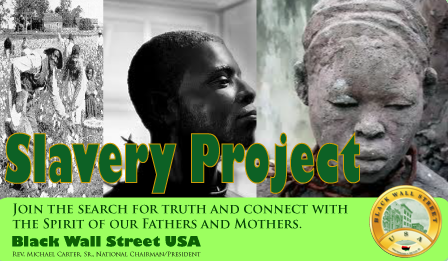
Alabama
Alaska
Arizona
Arkansas
California
Colorado
Connecticut
Delaware
Florida
Georgia
Hawaii
Idaho
Illinois
Indiana
Iowa
Kansas
Kentucky
Louisiana
Maine
Maryland
Massachusetts
Michigan
Minnesota
Mississippi
Missouri
Montana
Nebraska
Nevada
New Hampshire
New Jersey
New Mexico
New York
North Carolina
North Dakota
Ohio
Oklahoma
Oregon
Pennsylvania
Rhode Island
South Carolina
South Dakota
Tennessee
Texas
Utah
Vermont
Virginia
Washington
West Virginia
Wisconsin
Wyoming
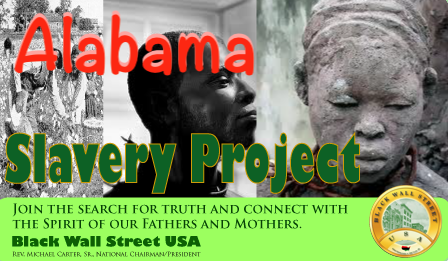
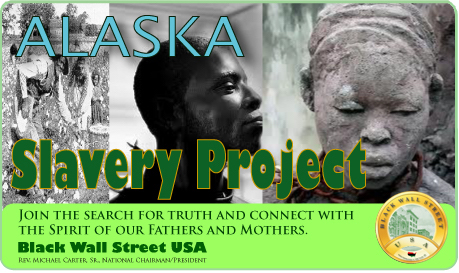



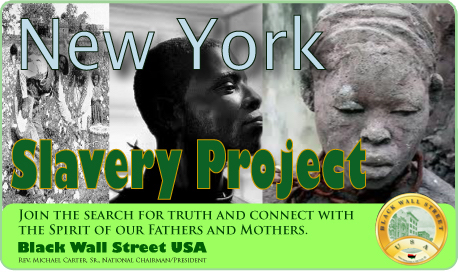

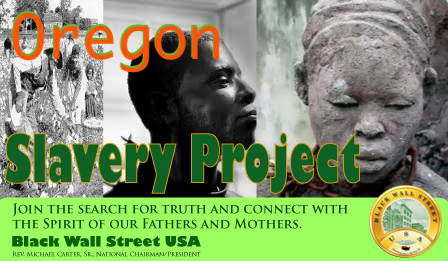
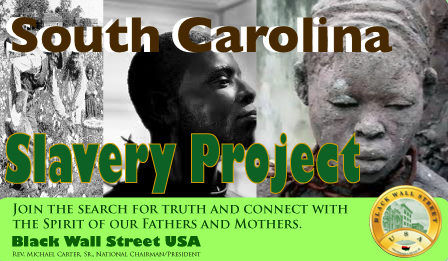
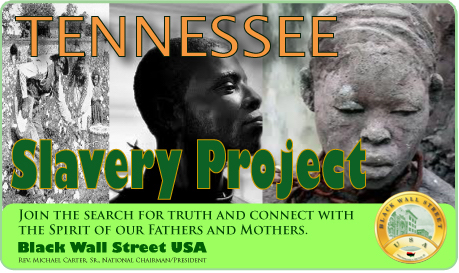
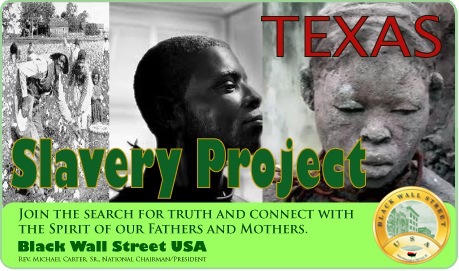



BlackWallStreet.org

Slave Records By State
See: Slave Records By State
Freedmen's Bureau Records
See: Freedmen's Bureau Online
American Slavery Records
See: American Slavery Records
American Slavery: Slave Narratives
See: Slave Narratives
American Slavery: Slave Owners
See: Slave Owners
American Slavery: Slave Records By County
See: Slave Records By County
American Slavery: Underground Railroad
See: American Slavery: Underground Railroad

